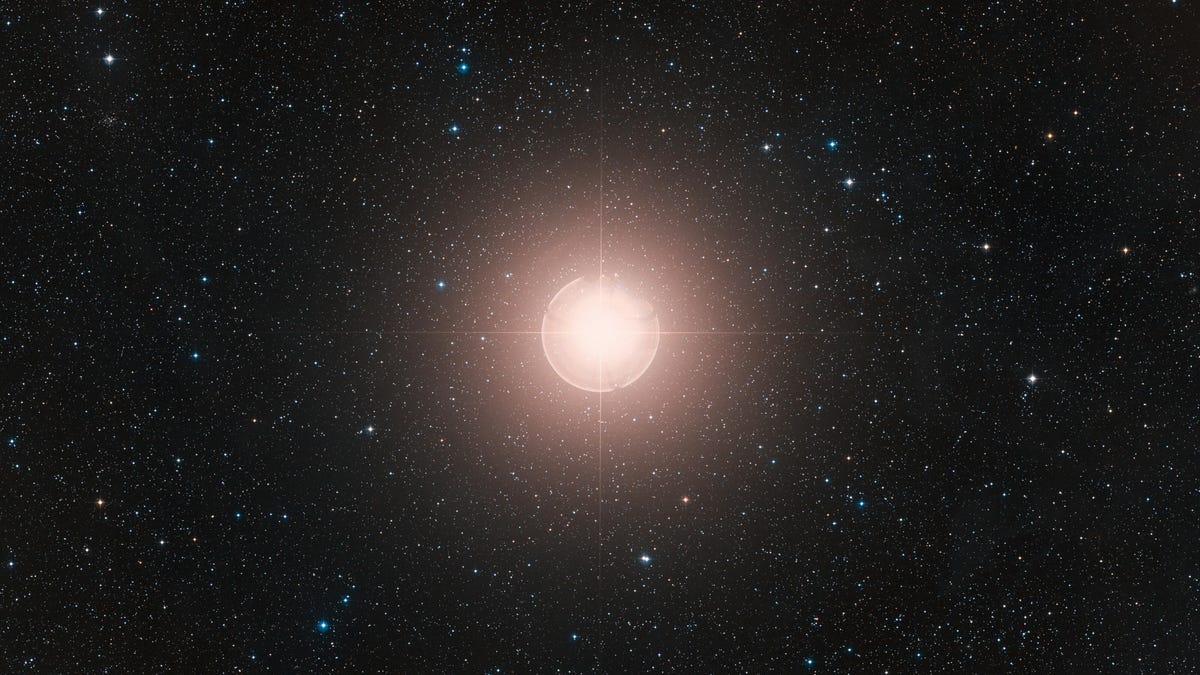The bright star Betelgeuse, a prominent member of the Orion constellation, is set to be occulted by the asteroid Leona on December 11. This occurrence, expected to last no more than 10 seconds, will cause the star to temporarily vanish from sight, a phenomenon visible along a narrow path on Earth.
Zillow Says You’ll Buy Your Next House With… AI? | AI Unlocked
The fascinating event is expected in the night sky on Tuesday, December 11 at approximately 8:17 p.m. ET (Wednesday, December 12 at 00:17 UT). This rare occultation will render Betelgeuse, one of the brightest stars in the sky, invisible or at least greatly dimmed for several seconds. Betelgeuse, also known as Alpha Orionis, is a significant component of the Orion constellation, marking the hunter’s red right shoulder.
The path of totality, where the occultation will be observable, stretches across a narrow band starting near Guadalajara, Mexico, and extends through south Florida, the Bahamas, southern parts of Spain and Italy, through to regions in Greece, Turkey, and central Asia. Lasting for nearly 18 minutes, the occultation will start at 8:08 p.m. ET and end at 8:26 p.m. ET (December 12 at 01:08:23 UT to 01:26:00 UT).
The occultation is expected across an exceptionally tight and limited band, so only a few areas on Earth will be privy to the spectacle. But don’t fret if you don’t live along this path: The Virtual Telescope 2.0 project, based in southern Italy, will livestream the event, which it’s making available at the feed below.
The extremely rare Betelgeuse occultation by asteroid (319) Leona: online event – 12 Dec. 2023
This event is not only a treat for stargazers but also a significant opportunity for scientists. Betelgeuse, a red supergiant approximately 550 light-years from Earth, is famous for its size, luminosity, and a penchant for confusing astronomers with sudden and unpredictable drops in brightness. Its classification as a semi-regular variable star and its eventual fate as a supernova make it a subject of avid interest in the astronomical community. The upcoming occultation offers a unique chance to observe and understand the behavior and characteristics of such a massive star.
Related article: A Dusty Burp Could Explain Mysterious Dimming of Supergiant Star Betelgeuse
Astronomers also anticipate gaining insights into the outer main-belt asteroid Leona. The event will provide valuable data regarding Leona’s size, shape, composition, potential atmosphere, and even the presence of any tiny moons. Recent observations have already refined our understanding of Leona, revealing its slightly elliptical shape rather than the previously assumed spherical form. Current estimates have Leona at being nearly 31 miles (50 kilometers) wide, but it could be as big as 42 miles (68 kilometers) wide. The upcoming occultation should further tighten these estimates.
These types of occultations “are very useful to constrain the shape of the asteroid involved,” Gianluca Masi, an astronomer at the Virtual Telescope 2.0 project in Italy, explained in an email. “Here, we hope to even investigate the surface of the involved star, too: Betelgeuse. It is a large red supergiant and while Leona will move in front of it as seen from Earth, we will be hopefully able to learn more about its large convective cells, driving its variable brightness.”
As Masi notes, the occultation could prove pivotal in understanding Betelgeuse’s large convection cells, which influence its brightness and should be observable as the asteroid moves across the star’s disk. These cells differ from those on the Sun by their longevity and size, potentially lasting for years and possibly playing a key role in the star’s observed mass loss, Miguel Montargè, an astronomer at the Paris Observatory, told Sky & Telescope.
Views of the occultation, particularly if Betelgeuse is larger than Leona from our point of view, could resemble an annular eclipse with the star not fully covered. If smaller, a brief period of “totality” could be observed. Astronomers recommend that both amateur and professional observers use specialized equipment and techniques, such as different color filters and light spectrum analysis, to capture the event’s nuances.
Despite improvements in predictive data, the exact path of Leona’s shadow carries some uncertainty, adding an element of surprise to this celestial phenomenon. So even if you’re outside the expected path of the eclipse, you might want to take the time to look up on December 11, if simply to appreciate Betelgeuse and its place in the Orion constellation.
